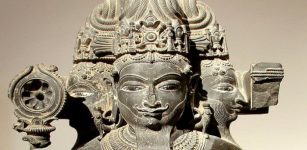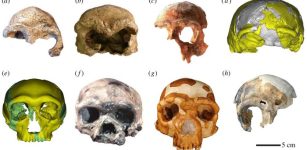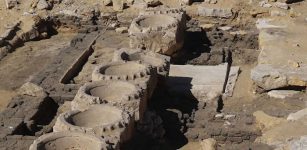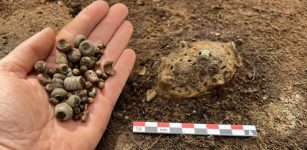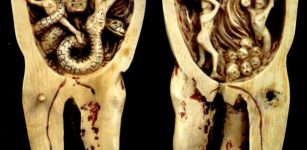Mystery Of The First Dinosaurs Deepens – Is The Supercontinent Gondwana The Answer?
Jan Bartek - AncientPages.com - The oldest known dinosaur fossils, dating back approximately 230 million years, have been discovered in southern regions such as Brazil, Argentina, and Zimbabwe. These fossils exhibit differences that imply dinosaurs had been evolving for some time before these findings, suggesting an even earlier origin.
A recent study conducted by researchers at University College London proposes that the remains of the earliest dinosaurs might still be hidden in the Amazon and other equatorial areas of South America and Africa.
Nyasasaurus could be the earliest known dinosaur, or else a close relative of early dinosaurs. Credit: Mark Witton/The Trustees of the Natural History Museum, London
"By examining gaps in the fossil record, the study concludes that these early dinosaurs likely originated in a warm equatorial region of the ancient supercontinent Gondwana—an area now encompassing parts of the Amazon, Congo Basin, and the Sahara Desert.
Dinosaurs are well studied but we still don't really know where they came from. The fossil record has such large gaps that it can't be taken at face value," lead author and Ph.D. student Joel Heath (UCL Earth Sciences and the Natural History Museum, London) said in a press relase.
"Our modeling suggests that the earliest dinosaurs might have originated in western, low-latitude Gondwana. This is a hotter and drier environment than previously thought, made up of desert- and savanna-like areas.
"So far, no dinosaur fossils have been found in the regions of Africa and South America that once formed this part of Gondwana. However, this might be because researchers haven't stumbled across the right rocks yet, due to a mix of inaccessibility and a relative lack of research efforts in these areas."
The study utilized fossils and evolutionary trees of dinosaurs and their reptile relatives, alongside geographical data from the era. It addressed gaps in the fossil record by considering regions without fossil discoveries as missing information rather than devoid of fossils. Initially, early dinosaurs were significantly outnumbered by other reptiles, such as crocodile ancestors, pseudosuchians (a diverse group with species reaching up to 10 meters), and pterosaurs—the first creatures to achieve powered flight through wing flapping rather than gliding—growing as large as fighter jets. In contrast, early dinosaurs were much smaller than their later descendants, comparable in size to chickens or dogs rather than Diplodocus. They were bipedal and likely omnivorous.
Dinosaurs rose to dominance after volcanic eruptions eliminated many reptilian competitors around 201 million years ago. The new modeling results propose that dinosaurs and other reptiles may have originated in low-latitude Gondwana before spreading outward to southern Gondwana and Laurasia—the northern supercontinent that eventually divided into Europe, Asia, and North America. This hypothesis is supported by the midpoint location between where the earliest dinosaur fossils have been found in southern Gondwana and where many close relative fossils have been discovered further north in Laurasia.
Due to uncertainties regarding the relationships among ancient dinosaurs and their relatives, researchers tested their model using three different proposed evolutionary trees.
They found strongest support for a low-latitude Gondwanan origin of the dinosaurs in the model that counted silesaurids, traditionally regarded as cousins of dinosaurs but not dinosaurs themselves, as ancestors of ornithischian dinosaurs.
Ornithischians, one of the three main dinosaur groups that later included plant eaters Stegosaurus and Triceratops, are mysteriously absent from the fossil record of these early years of the dinosaur era. If silesaurids are the ancestors of ornithischians, this helps to fill in this gap in the evolutionary tree.
Senior author Professor Philip Mannion (UCL Earth Sciences) said: “Our results suggest early dinosaurs may have been well adapted to hot and arid environments. Out of the three main dinosaur groups, one group, sauropods, which includes the Brontosaurus and the Diplodocus, seemed to retain their preference for a warm climate, keeping to Earth’s lower latitudes.
“Evidence suggests the other two groups, theropods and ornithischians, may have developed the ability to generate their own body heat some millions of years later in the Jurassic period, allowing them to thrive in colder regions, including the poles.”
The earliest known dinosaurs include Eoraptor, Herrerasaurus, Coelophysis, and Eodromaeus.
The study was published in the journal Current Biology
Written by Jan Bartek - AncientPages.com Staff Writer




